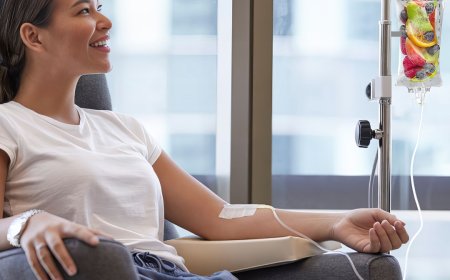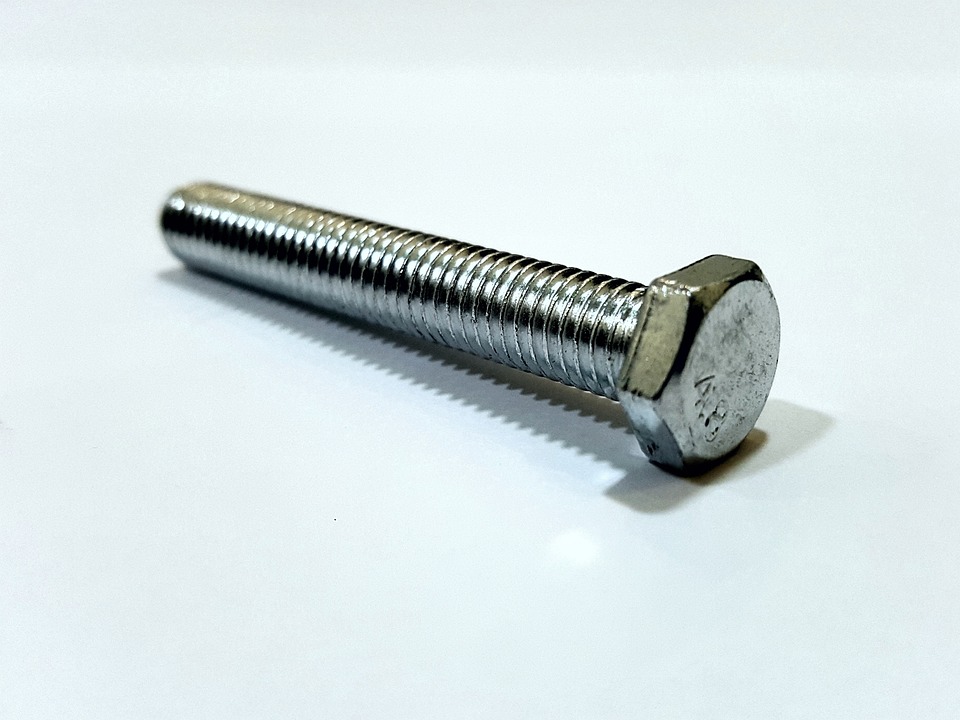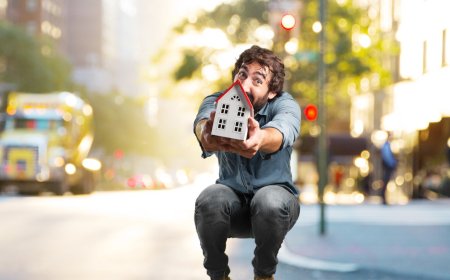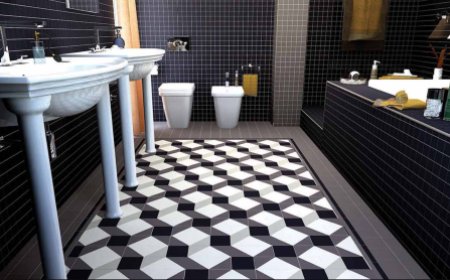How to Book a New Orleans Private Photography Tour
How to Book a New Orleans Private Photography Tour New Orleans is a city that breathes color, rhythm, and story. From the ornate ironwork of French Quarter balconies to the haunting beauty of Lafayette Cemetery No. 1, every corner holds a visual narrative waiting to be captured. A private photography tour in New Orleans isn’t just a photo outing—it’s a curated journey through culture, history, and
How to Book a New Orleans Private Photography Tour
New Orleans is a city that breathes color, rhythm, and story. From the ornate ironwork of French Quarter balconies to the haunting beauty of Lafayette Cemetery No. 1, every corner holds a visual narrative waiting to be captured. A private photography tour in New Orleans isn’t just a photo outing—it’s a curated journey through culture, history, and light, guided by someone who knows where the shadows fall just right and when the golden hour kisses St. Louis Cathedral. Unlike group tours that rush from landmark to landmark, a private photography tour is tailored to your vision, skill level, and creative goals. Whether you’re a smartphone enthusiast, a DSLR user, or a professional seeking unique angles, booking the right private tour can transform your experience from sightseeing to storytelling. This guide walks you through every step of securing the ideal private photography tour in New Orleans, offering insider strategies, expert tips, and real-world examples to ensure your session is not only memorable but visually exceptional.
Step-by-Step Guide
Define Your Photography Goals
Before you begin searching for a tour, clarify what you want to achieve. Are you hoping to capture the vibrant street life of Frenchmen Street? Do you want to learn long-exposure techniques on the Mississippi River at dusk? Are you interested in architectural details, food photography, or portraits of local musicians? Your goal determines the type of guide you need and the areas you’ll explore. For example, if your focus is on food and markets, you’ll want a guide familiar with the Crescent City’s culinary scene—someone who knows which stalls offer the best lighting and when the beignets are freshly dusted with powdered sugar. If you’re drawn to the city’s haunted history, prioritize a guide with expertise in cemetery photography and low-light techniques. Write down three specific outcomes you hope to achieve from the tour. This clarity will help you evaluate tour descriptions and ask informed questions during booking.
Research Local Photography Guides and Companies
Start your search by identifying photographers and tour operators who specialize in private experiences. Avoid generic sightseeing companies that offer “photo stops” as an afterthought. Look for professionals who list photography as their primary service. Search terms like “private New Orleans photography tour,” “personalized photo walk New Orleans,” or “New Orleans photography guide for beginners” will yield better results than broad terms like “New Orleans tours.” Use platforms like Google Maps, Instagram, and specialized photography forums to find local experts. Look for photographers who showcase their own work in the areas you want to explore—this is the best indicator of their knowledge and aesthetic. Pay attention to the consistency of their portfolio: are their images sharp, well-composed, and rich in atmosphere? Do they capture the soul of the city, or just the postcard versions? Once you’ve compiled a list of five to seven potential guides, cross-reference their websites, social media, and reviews to assess reliability and style.
Review Tour Itineraries and Customization Options
Not all private tours are created equal. Some offer fixed routes and times, while others allow full customization. Look for guides who provide detailed itineraries that include specific locations, approximate timing for each stop, and the photographic opportunities available at each. A strong itinerary might read: “9:00 AM – Jackson Square (lighting for portraits and architecture), 10:30 AM – Royal Street (ironwork close-ups and color contrast), 12:00 PM – Café du Monde (food styling and natural light), 2:00 PM – Lafayette Cemetery No. 1 (dramatic shadows and textures).” The more specific the itinerary, the more likely the guide has experience and planning expertise. Also, check if they offer flexibility—can you extend the tour? Can you swap locations based on weather or lighting conditions? The best guides adapt to the environment, not the other way around.
Check Credentials and Experience
While anyone can call themselves a “photography guide,” the most effective ones have professional training, local knowledge, and a proven track record. Look for credentials such as membership in photography associations (e.g., Professional Photographers of America), published work in travel magazines, or teaching experience at workshops. Ask the guide how long they’ve been leading private tours and how many clients they’ve worked with. A guide who has led over 200 private sessions will likely anticipate challenges—like sudden rain showers or crowded streets—better than someone new to the role. Don’t hesitate to ask for references or sample client testimonials. A confident guide will gladly share feedback from past participants.
Confirm Equipment Requirements and Support
Some guides cater to all skill levels and bring extra gear—tripods, reflectors, or even portable lighting—for clients who don’t own equipment. Others expect you to bring your own camera, lens, and accessories. Clarify this upfront. If you’re a beginner, you may benefit from a guide who can recommend the best lens for street photography or help you adjust your camera settings. If you’re advanced, confirm whether the guide can assist with manual focus techniques or bracketing for HDR shots. Ask if the tour includes post-processing tips or a private online gallery of your images afterward. These value-adds can significantly elevate your learning experience.
Compare Pricing and Inclusions
Private photography tours in New Orleans typically range from $150 to $450 for a 3- to 5-hour session, depending on group size, duration, and guide expertise. Be wary of prices that seem too low—they may indicate a lack of experience or hidden costs. Ensure the quoted price includes everything: the guide’s time, any location permits (if applicable), and materials like a printed map or digital guidebook. Some guides offer add-ons: a 30-minute editing session, a custom Lightroom preset pack, or a printed 8x10 of your favorite shot. Compare what’s included across providers. The most transparent pricing lists every item clearly—no vague terms like “everything you need” without specifics.
Book with a Contract or Written Confirmation
Never rely on a verbal agreement. Once you’ve selected a guide, request a written booking confirmation that includes: date and time, meeting point, duration, total cost, cancellation policy, and what’s included. A professional guide will provide this via email or a digital platform like Google Forms or HoneyBook. Review the cancellation policy carefully. Reputable operators offer full refunds for cancellations made 48–72 hours in advance, and may reschedule due to weather. Avoid anyone who demands full payment upfront with no flexibility. A secure booking process is a sign of professionalism and respect for your time and investment.
Prepare for the Day of the Tour
Once booked, prepare as you would for a professional photo shoot. Check the weather forecast and dress appropriately—comfortable walking shoes are essential, and layers are key due to New Orleans’ variable humidity and afternoon showers. Bring a fully charged camera battery, a spare memory card, and a small backpack to carry your gear. If you’re using a smartphone, ensure you have a high-quality camera app installed (like ProCamera or Manual) and consider a portable tripod or stabilizer. Pack water, sunscreen, and a light rain jacket. Arrive 10–15 minutes early at the designated meeting spot. Bring a notebook or digital device to jot down tips, locations, or camera settings the guide shares. Your preparation shows respect for the guide’s expertise and sets the tone for a productive session.
Best Practices
Choose the Right Time of Year
New Orleans’ climate dramatically affects lighting and crowd density. The best months for photography are late October through early April, when temperatures are mild, humidity is lower, and the light is softer. Avoid July and August if possible—high heat and humidity can be exhausting, and midday sun creates harsh shadows. Early morning (7–9 AM) and late afternoon (4–6 PM) offer the most flattering light, especially for capturing the golden hues on brick facades and wrought iron. Consider booking your tour during the week to avoid weekend crowds at popular spots like Bourbon Street. If you’re aiming for vibrant street life, plan around Mardi Gras season (February–March) or Jazz Fest (late April–early May), but be aware these periods require advanced booking and higher prices.
Communicate Your Skill Level Honestly
Whether you’re a complete novice or a seasoned shooter, being upfront about your experience helps your guide tailor the session. If you’ve never used manual mode, say so. If you’re comfortable with aperture priority and focus stacking, mention that too. A skilled guide will adjust their teaching pace accordingly—offering foundational tips to beginners and advanced techniques to experienced photographers. Don’t pretend to know more than you do; it can lead to frustration on both sides. The goal is growth, not performance.
Respect Local Culture and Privacy
New Orleans is deeply rooted in community and tradition. When photographing residents, musicians, or religious ceremonies, always ask permission before taking close-up shots. Many locals are happy to be photographed, especially if you show genuine interest in their art or story. Avoid intrusive behavior—such as blocking doorways or startling performers during live music. Be mindful of cemetery etiquette: no flash photography in Lafayette Cemetery, no climbing on tombs, and always walk quietly. A respectful photographer is welcomed back—and often given access to hidden gems locals are reluctant to share with tourists.
Use Natural Light to Your Advantage
One of the greatest assets of a private photography tour is learning to work with New Orleans’ unique lighting. The city’s narrow streets and tall buildings create dramatic contrasts and long shadows. Learn to recognize when light is “hard” (midday sun) versus “soft” (early morning or overcast). Use reflective surfaces—like wet pavement after rain or white walls—to bounce light onto your subject. At Café du Monde, position yourself so the morning sun hits the beignets from the side, creating texture on the powdered sugar. In the French Quarter, shoot alleyways with light filtering from above to highlight the layered textures of paint and brick. Your guide will help you see these opportunities, but understanding the principles makes you a more confident photographer long after the tour ends.
Bring a Small Notebook or Digital Journal
It’s easy to forget camera settings or location names after a full day of shooting. Keep a small notebook or use a note-taking app to record key details: “F/2.8, 1/125s, ISO 400 at St. Louis Cathedral at 5:15 PM,” or “Hidden courtyard behind St. Peter Street—ask Maria for access.” These notes become invaluable reference points when editing later. Some guides even provide a printed checklist of locations and lighting tips—ask if this is available.
Plan for Post-Tour Editing
A photography tour doesn’t end when the guide says goodbye. Set aside time after the tour to review your images. Identify your favorites and analyze why they worked—was it the composition, the light, the emotion? If your guide offers editing tips, practice them. Learn to adjust white balance for the warm tones of New Orleans’ buildings, or use local color grading presets to enhance the city’s signature palette of pastels, greens, and golds. Consider creating a small digital album to share with friends or post online—this reinforces your learning and celebrates your experience.
Tools and Resources
Recommended Camera Gear
While you can capture stunning images with a smartphone, having the right equipment expands your creative options. For DSLR or mirrorless users, consider the following setup:
- Wide-angle lens (16–35mm): Ideal for capturing the scale of Jackson Square or the depth of alleyways.
- Prime lens (35mm or 50mm f/1.8): Excellent for portraits, street scenes, and low-light situations like dimly lit jazz clubs.
- Travel tripod (lightweight): Useful for long exposures at night or early morning shots on the riverfront.
- ND filter: Helps control exposure during bright daylight, especially useful for capturing motion blur on the Mississippi.
- Extra batteries and memory cards: New Orleans is full of photo opportunities—you don’t want to miss one because your battery died.
For smartphone users, invest in a clip-on wide-angle lens and a small tripod. Apps like Snapseed, Lightroom Mobile, and ProCamera give you manual control over exposure, focus, and white balance.
Mobile Apps for Photography Planning
Several apps enhance your pre-tour preparation and on-the-go adjustments:
- PhotoPills: Tracks sun and moon positions, golden hour timing, and blue hour. Essential for planning when to be at specific locations.
- Google Earth: Use the 3D view to explore street layouts and anticipate vantage points before you arrive.
- Windy: Monitors wind, cloud cover, and humidity—helpful for predicting lighting conditions.
- Instagram: Search hashtags like
neworleansphotography or #frenchquarterphoto to see recent images and identify popular shooting spots.
Books and Online Learning Resources
Deepen your understanding with these resources:
- “The Photographer’s Eye” by Michael Freeman: A foundational text on composition that applies perfectly to New Orleans’ layered streetscapes.
- “Street Photography Now” by Sophie Howarth: Offers inspiration for capturing candid moments in urban environments.
- YouTube Channels: “Peter McKinnon” and “Tony & Chelsea Northrup” offer practical tutorials on lighting and editing that complement on-location learning.
- Photography blogs: Visit fstoppers.com and petapixel.com for articles on shooting in historic cities.
Local Photography Communities
Joining a local group can extend your learning beyond the tour:
- New Orleans Photography Club: Hosts monthly meetups and field trips across the city.
- Instagram communities: Search for
nolaphoto or #neworleansphotographers to connect with local shooters.
- Workshops at The Photography Studio New Orleans: Offers advanced classes in HDR, night photography, and film.
Real Examples
Example 1: A First-Time Traveler’s Journey
Emma, a 28-year-old teacher from Ohio, booked a 4-hour private tour with local photographer Marcus Delacroix after seeing his Instagram portfolio of French Quarter shadows and jazz musicians. She had never used manual mode. Marcus met her at Jackson Square at 7:30 AM, armed with a reflector and a printed cheat sheet on exposure settings. They started with portrait lighting using natural window light on a café terrace, then moved to Royal Street to practice depth of field on ironwork. By noon, Emma was confidently adjusting her aperture to blur background clutter. Marcus showed her how to shoot a street musician from a low angle to emphasize the instrument’s curves. At the end of the tour, Marcus emailed her 12 edited images and a 5-page PDF titled “5 Lighting Secrets of New Orleans.” Emma later used those images in a travel blog that gained 50,000 views. Her tour cost $280—and she said it was the best investment she’d ever made in her photography.
Example 2: A Professional Seeking Unique Angles
Raj, a commercial photographer from Chicago, hired a private guide to capture unseen perspectives of New Orleans for a magazine feature. He wanted to avoid the typical postcard shots. His guide, Lila Nguyen, took him to the back alleys of the Marigny neighborhood, where faded murals and laundry lines created abstract patterns. They visited a local artist’s studio in the Bywater to photograph hand-painted doors, then rode a vintage streetcar at twilight to capture reflections on the windows. Lila knew the exact time the streetlights turned on and how the river mist rolled in after 7 PM. Raj returned with over 200 images, 18 of which were published in National Geographic Traveler. He later booked a second tour for his assistant. “I’ve shot in 30 cities,” Raj said. “No one showed me New Orleans like Lila did.”
Example 3: A Family Photography Experience
The Rivera family—parents and two teenage children—booked a 3-hour private tour as a bonding activity during their vacation. They wanted to create a visual diary of their trip. Their guide, Tanya Lewis, focused on storytelling: capturing the kids eating beignets, their parents laughing on a bench, the family’s shadow on the sidewalk. Tanya used a 35mm lens to keep everyone in frame without forcing poses. She taught the teens how to use manual focus on moving subjects. They ended the tour at the riverwalk, shooting the sunset with their phones and a small tripod. Tanya created a shared online gallery with all the images and sent them a printed 8x10 of the sunset shot. “We didn’t just take pictures,” said the mother. “We made memories we can hold.”
FAQs
How far in advance should I book a private photography tour in New Orleans?
Book at least 2–4 weeks in advance during peak seasons (Mardi Gras, Jazz Fest, holidays). For off-season travel (May–September), you may find availability with 1–2 weeks’ notice. Popular guides often have limited slots per week, so early booking ensures you get your preferred date and time.
Can I bring a non-photographer companion on the tour?
Yes, many guides allow one or two additional guests at no extra charge, especially if they’re family members or partners. Confirm this when booking. Keep in mind that the focus remains on photography, so companions should be respectful of the session’s pace and purpose.
What happens if it rains on the day of my tour?
Most professional guides are flexible and will reschedule if rain is forecasted. Light rain can actually enhance photography—wet streets reflect neon signs, and mist adds atmosphere. If the weather is mild, the tour may proceed with umbrellas and rain covers for gear. Always ask the guide’s policy on weather-related changes before booking.
Do I need to own a professional camera?
No. Many guides specialize in smartphone photography and can teach you how to use your phone’s manual settings, composition techniques, and editing apps. You’ll get just as much value with a smartphone as with a high-end DSLR.
Are tips expected for private photography tours?
Tipping is not required but is appreciated if the guide exceeds expectations. A 10–20% tip is common for exceptional service, especially if the guide went above and beyond with personalized tips or extra editing.
Can I request a specific location not on the standard itinerary?
Yes. Most private tours are customizable. If you have a particular church, mural, or café in mind, mention it when booking. A good guide will incorporate your request if it’s logistically feasible and photographically rewarding.
Will I receive edited photos after the tour?
This varies by provider. Some include 5–15 edited images as part of the package; others offer editing as an add-on. Always ask before booking. If editing isn’t included, consider asking for a list of recommended Lightroom presets for New Orleans’ lighting.
Are private tours suitable for children?
Yes, if the children are interested in photography and can walk for several hours. Some guides offer family-friendly tours with fun, interactive elements—like scavenger hunts for colorful doors or shutter-speed games. Confirm age recommendations when booking.
Conclusion
Booking a private photography tour in New Orleans is more than a service—it’s an invitation to see the city through the eyes of someone who knows its soul. Unlike guided bus tours or generic photo walks, a private session is intimate, adaptive, and deeply personal. It transforms you from a visitor into a storyteller. By following the steps outlined here—from defining your goals to preparing for the day—you ensure that your experience is not only well-organized but profoundly enriching. The right guide doesn’t just show you where to stand; they teach you how to see. Whether you’re capturing the quiet dignity of a jazz funeral, the glitter of a Mardi Gras mask, or the steam rising from a po’boy at a corner deli, your images will carry the heartbeat of New Orleans. Invest in the right tour, prepare with intention, and let the city reveal its hidden frames. The lens doesn’t just capture light—it captures memory. And in New Orleans, memory is everything.




















